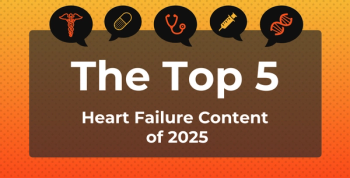
Let's Talk About Sex and Pelvic Floor Disorders
Pelvic Floor Disorders (PFDs) affect tens of millions of women in the US alone, yet both provider and patient awareness remains low.
Pelvic floor disorders (PFDs) often count pain or sexual dysfunction among other “bothersome” (ie, terribly embarrassing) symptoms such as urinary or fecal incontinence. Although many women suffer from PFDs, awareness of the disorder, and treatment options, are still quite low. Before breaking down some of the reasons to understand why this may be the case, let’s make sure we are all on the same page about what PFDs actually are.
Wait, My Pelvis Has a Floor?
Both men and women have a pelvic floor (which is made up of all the tissues—muscles, ligaments, and nerves that
Reasons for the increasing prevalence have partly to do with population health trends and include the fact that disorders of the pelvic floor are more common for women with
What Does It Mean to Have a Disorder of the Pelvic Floor?
Pelvic floor primarily plays a supportive role for a range of important organs. It should
Why Haven’t I Heard of This?
That’s a good question.
Awareness of PFDs is so low that in 2012 the Boston Scientific Corporation announced the
While trying to approach any medical problem as carefully and systematically as possible is certainly important, the relative confusion behind PFDs on the provider side only adds to the stigma and confusion on the patient side. Even if a woman does gain the courage to mention embarrassing symptoms such as leaking urine or pain during sex, providers may not know what treatments to offer or which specialists to refer her to. She might be told to simply relax more, she might get offered treatments like “
Treatment Is Complicated, So Let’s Pay Attention
Perhaps one reason PFD isn’t as well known as say, erectile dysfunction is that as of yet there’s no magic pill for PFDs.
What You Don’t Know Can Definitely Hurt You
Awareness about PFDs and treatment options should start from the medical community (and advocacy communities) so that providers know enough to ask and educate patients, and insurers should follow suit by prioritizing coverage of effective treatment options so that symptoms can be addressed as early as possible.
Great. Where is she going with this?
Over a series of upcoming posts, I’ll explore in greater depth the reasons for low awareness on PFDs. These posts will include discussion of the stigma behind some of the symptoms (the comparative societal concern for sexual dysfunction in men vs. women for example), the role direct-to-consumer advertising markedly doesn’t play in increasing awareness of PFD, as well as issues that perhaps most interest AJMC blog readers such as coverage for some of the most effective treatments, like physical therapy and why this still varies drastically by plan. All of these factors and others contribute to large numbers of women being unaware that they can get relief from their symptoms, or being denied coverage when they do find that relief.
This, I argue, is unacceptable.
Newsletter
Stay ahead of policy, cost, and value—subscribe to AJMC for expert insights at the intersection of clinical care and health economics.







































